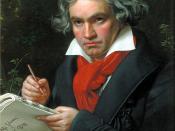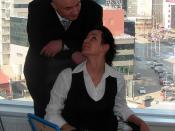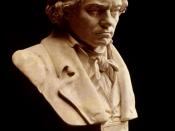Culture: Romanticism and Realism
I.Romanticism
a.About romanticism
1.At the end of the 18th century, a new intellectual movement, known as romanticism, emerged as a reaction to the ideas of the Enlightenment.
2.The romantics emphasized feelings, emotions, and imagination as sources of knowing.
3.The romantics believed that emotion and sentiment were only understandable to the person experiencing them.
4.Romantics also valued individualism, the belief in the uniqueness of each person.
5.Many romantics had a passionate interest in the past. They revived medieval architecture and built castles, cathedrals, city halls, parliamentary buildings, and even railway stations in a style called neo-Gothic.
6.The novels of Walter Scott became best-sellers in the first half of the 19th century.
7.The exotic and unfamiliar also attracted many romantics. This attraction gave rise to Gothic literature.
8. The romantics viewed poetry as the direct expression of the soul.
9.Romantics believed that nature served as a mirror into which humans could look to and learn about themselves.
10.The worship of a nature also caused Wordsworth and other romantic poets to be critical of 18th century science, which, they believed, had reduced nature to a cold object to study.
11.Like the literary arts, visual arts were deeply affected by romanticism.
12.To many romantics, music was the most romantic of the arts, because it enabled the composer to probe deeply into human emotions.
13.One of the greatest composers of all time, Ludwig Beethoven, was the bridge between the classical and romantic periods in music.
II.A New Age of Science
a.About the new age of science
1.The Scientific Revolution had created a modern, rational approach to the study of the natural world.
2. In Biology, the Frenchman Louis Pasteur proposed the germ theory of disease,



Good outline
Thorough outline, but this is not an essay.
2 out of 2 people found this comment useful.